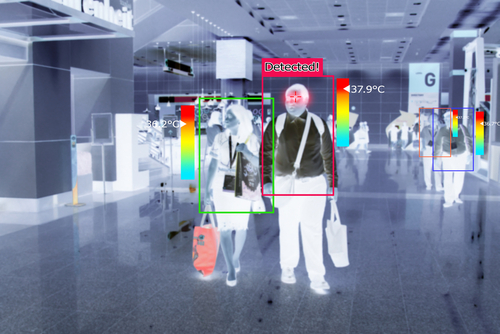The Use of Technology to Reduce COVID-19 at Airports
(May, 2020)
We know that many airlines are requiring passengers to wear face masks, limiting passengers on flights and updating cleaning procedures, but what else are airports doing to support these policies and new social distancing rules?
Airports in the U.S. and internationally are testing thermal cameras, sanitation booths and other technologies in hopes of reducing the spread of COVID-19 while dropping the danger of exposing airport workers to the disease.
Thermal Cameras
Stationary thermal cameras are most likely to be used at airports because they have been used in the past during the Severe Acute Respiratory Syndrome (SARS) crisis in 2003 and the Ebola outbreak in 2014. Due to coronavirus today, the need for these cameras has intensified. With thermal cameras at airports, a passenger who produces an unusually high temperature is automatically denied entry and is directed to an isolated area where nurses or other trained professionals can perform a more in-depth assessment. Thermal cameras also help airport screeners avoid being in close personal contact with passengers, as several airports have used hand-held thermometers to find a person’s temperature.
It is important to know that people infected with the coronavirus can have normal body temperatures and still pass along the virus to others. Thermal camera companies recognize that their systems are not a surefire way to identify each and every infected traveler, but can help slow the pandemic by pinpointing those with high temperatures.
Sanitation Booths
At Hong Kong International Airport, officials have launched a sealed booth pilot program that tests a traveler’s temperature and then sprays them with a sanitation formula. The entire process takes around 40 seconds and is currently being used on airport employees responsible for public health and quarantine responsibilities for arriving passengers. In addition to the sanitizing spray, the booth is kept under negative pressure to prevent cross-contamination between the inside and outside environments. This advancement in Hong Kong, along with other technology, is expected to make its way to the busiest American airports.
As the global travel industry begins to reopen borders, airports are embracing and testing new technologies to implement the most efficient safety procedures for travelers.




Leave a Reply
Want to join the discussion?Feel free to contribute!